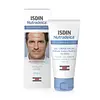What's inside
What's inside
 Key Ingredients
Key Ingredients

 Benefits
Benefits

 Concerns
Concerns

 Ingredients Side-by-side
Ingredients Side-by-side

Water
Skin ConditioningGlycerin
HumectantAcetamide Mea
HumectantIsodecyl Neopentanoate
EmollientCyclopentasiloxane
EmollientPentylene Glycol
Skin ConditioningCetyl Alcohol
EmollientCyclohexasiloxane
EmollientSclerotium Gum
Emulsion StabilisingZinc PCA
HumectantPiroctone Olamine
PreservativePolyacrylamide
Polymethyl Methacrylate
Butylene Glycol
HumectantStearyl Glycyrrhetinate
Skin ConditioningC13-14 Isoparaffin
EmollientGlyceryl Stearate
EmollientPEG-100 Stearate
Acrylates/C10-30 Alkyl Acrylate Crosspolymer
Emulsion StabilisingDimethicone/Vinyl Dimethicone Crosspolymer
Skin ConditioningSodium Hydroxide
BufferingLaureth-7
EmulsifyingBiosaccharide Gum-2
Skin ConditioningDisodium EDTA
Hydroxyphenyl Propamidobenzoic Acid
Skin ConditioningAscorbyl Palmitate
AntioxidantWater, Glycerin, Acetamide Mea, Isodecyl Neopentanoate, Cyclopentasiloxane, Pentylene Glycol, Cetyl Alcohol, Cyclohexasiloxane, Sclerotium Gum, Zinc PCA, Piroctone Olamine, Polyacrylamide, Polymethyl Methacrylate, Butylene Glycol, Stearyl Glycyrrhetinate, C13-14 Isoparaffin, Glyceryl Stearate, PEG-100 Stearate, Acrylates/C10-30 Alkyl Acrylate Crosspolymer, Dimethicone/Vinyl Dimethicone Crosspolymer, Sodium Hydroxide, Laureth-7, Biosaccharide Gum-2, Disodium EDTA, Hydroxyphenyl Propamidobenzoic Acid, Ascorbyl Palmitate
Water
Skin ConditioningGlycerin
HumectantParaffinum Liquidum
EmollientEthylhexyl Stearate
EmollientDimethicone
EmollientNiacinamide
SmoothingSucrose Stearate
EmollientGlyceryl Dibehenate
EmollientFructooligosaccharides
HumectantMannitol
HumectantXylitol
HumectantRhamnose
HumectantLaminaria Ochroleuca Extract
Skin ConditioningPeumus Boldus Leaf Extract
MaskingZanthoxylum Bungeanum Fruit Extract
Skin ConditioningTribehenin
EmollientPentylene Glycol
Skin ConditioningGlyceryl Behenate
EmollientAcrylates/C10-30 Alkyl Acrylate Crosspolymer
Emulsion Stabilising1,2-Hexanediol
Skin ConditioningCaprylyl Glycol
EmollientAmmonium Acryloyldimethyltaurate/Vp Copolymer
Caprylic/Capric Triglyceride
MaskingOleyl Alcohol
EmollientXanthan Gum
EmulsifyingSodium Hydroxide
BufferingDisodium EDTA
Water, Glycerin, Paraffinum Liquidum, Ethylhexyl Stearate, Dimethicone, Niacinamide, Sucrose Stearate, Glyceryl Dibehenate, Fructooligosaccharides, Mannitol, Xylitol, Rhamnose, Laminaria Ochroleuca Extract, Peumus Boldus Leaf Extract, Zanthoxylum Bungeanum Fruit Extract, Tribehenin, Pentylene Glycol, Glyceryl Behenate, Acrylates/C10-30 Alkyl Acrylate Crosspolymer, 1,2-Hexanediol, Caprylyl Glycol, Ammonium Acryloyldimethyltaurate/Vp Copolymer, Caprylic/Capric Triglyceride, Oleyl Alcohol, Xanthan Gum, Sodium Hydroxide, Disodium EDTA
 Reviews
Reviews

Ingredients Explained
These ingredients are found in both products.
Ingredients higher up in an ingredient list are typically present in a larger amount.
Acrylates/C10-30 Alkyl Acrylate Crosspolymer is a synthetic polymer. It is used to thicken and improve the texture of products. Due to its properties, it can prevent water and oil ingredients from separating.
Disodium EDTA plays a role in making products more stable by aiding other preservatives.
It is a chelating agent, meaning it neutralizes metal ions that may be found in a product.
Disodium EDTA is a salt of edetic acid and is found to be safe in cosmetic ingredients.
Learn more about Disodium EDTAGlycerin is already naturally found in your skin. It helps moisturize and protect your skin.
A study from 2016 found glycerin to be more effective as a humectant than AHAs and hyaluronic acid.
As a humectant, it helps the skin stay hydrated by pulling moisture to your skin. The low molecular weight of glycerin allows it to pull moisture into the deeper layers of your skin.
Hydrated skin improves your skin barrier; Your skin barrier helps protect against irritants and bacteria.
Glycerin has also been found to have antimicrobial and antiviral properties. Due to these properties, glycerin is often used in wound and burn treatments.
In cosmetics, glycerin is usually derived from plants such as soybean or palm. However, it can also be sourced from animals, such as tallow or animal fat.
This ingredient is organic, colorless, odorless, and non-toxic.
Glycerin is the name for this ingredient in American English. British English uses Glycerol/Glycerine.
Learn more about GlycerinPentylene glycol is typically used within a product to thicken it. It also adds a smooth, soft, and moisturizing feel to the product. It is naturally found in plants such as sugar beets.
The hydrophilic trait of Pentylene Glycol makes it a humectant. As a humectant, Pentylene Glycol helps draw moisture from the air to your skin. This can help keep your skin hydrated.
This property also makes Pentylene Glycol a great texture enhancer. It can also help thicken or stabilize a product.
Pentylene Glycol also acts as a mild preservative and helps to keep a product microbe-free.
Some people may experience mild eye and skin irritation from Pentylene Glycol. We always recommend speaking with a professional about using this ingredient in your routine.
Pentylene Glycol has a low molecular weight and is part of the 1,2-glycol family.
Learn more about Pentylene GlycolSodium Hydroxide is also known as lye or caustic soda. It is used to adjust the pH of products; many ingredients require a specific pH to be effective.
In small amounts, sodium hydroxide is considered safe to use. However, large amounts may cause chemical burns due to its high alkaline.
Your skin has a natural pH and acid mantle. This acid mantle helps prevent harmful bacteria from breaking through. The acid mantle also helps keep your skin hydrated.
"Alkaline" refers to a high pH level. A low pH level would be considered acidic.
Learn more about Sodium HydroxideWater. It's the most common cosmetic ingredient of all. You'll usually see it at the top of ingredient lists, meaning that it makes up the largest part of the product.
So why is it so popular? Water most often acts as a solvent - this means that it helps dissolve other ingredients into the formulation.
You'll also recognize water as that liquid we all need to stay alive. If you see this, drink a glass of water. Stay hydrated!
Learn more about Water